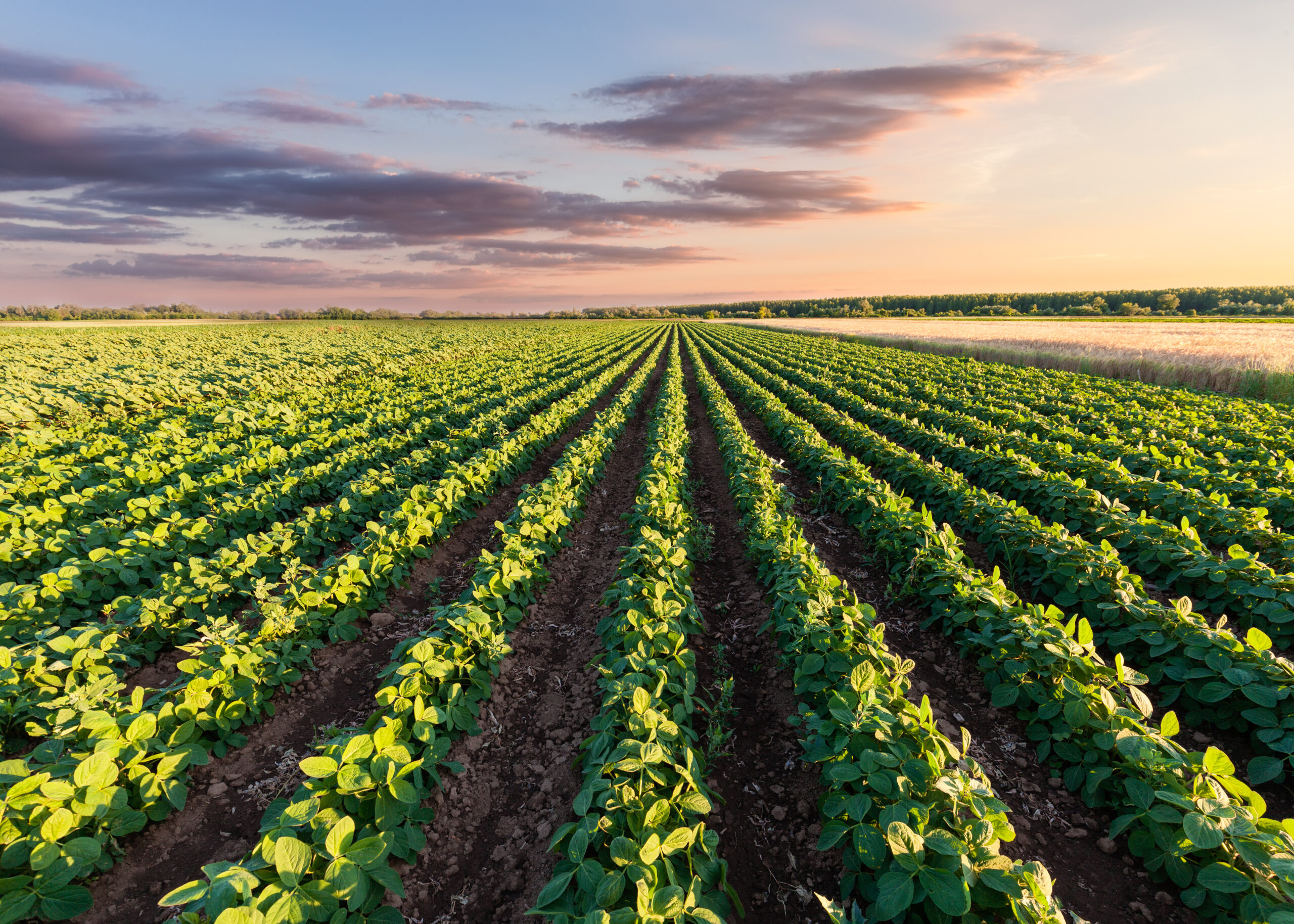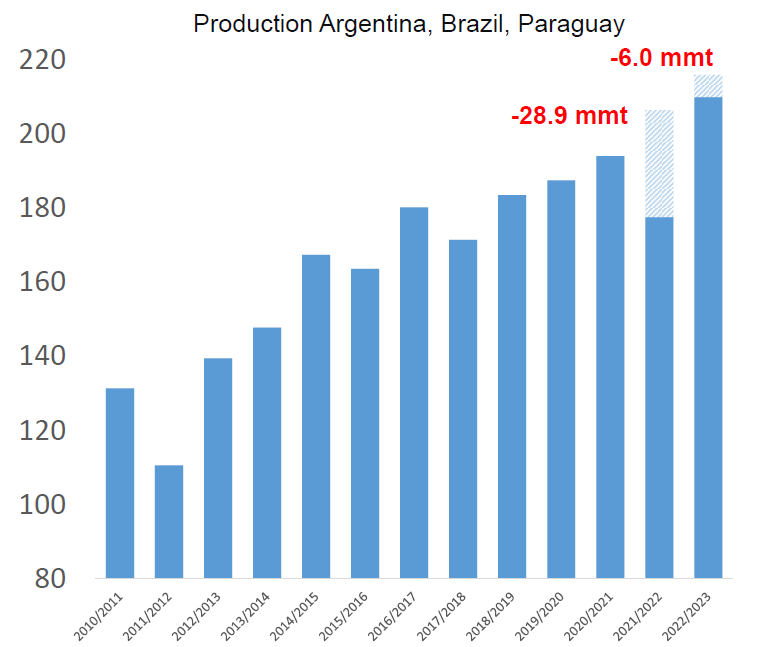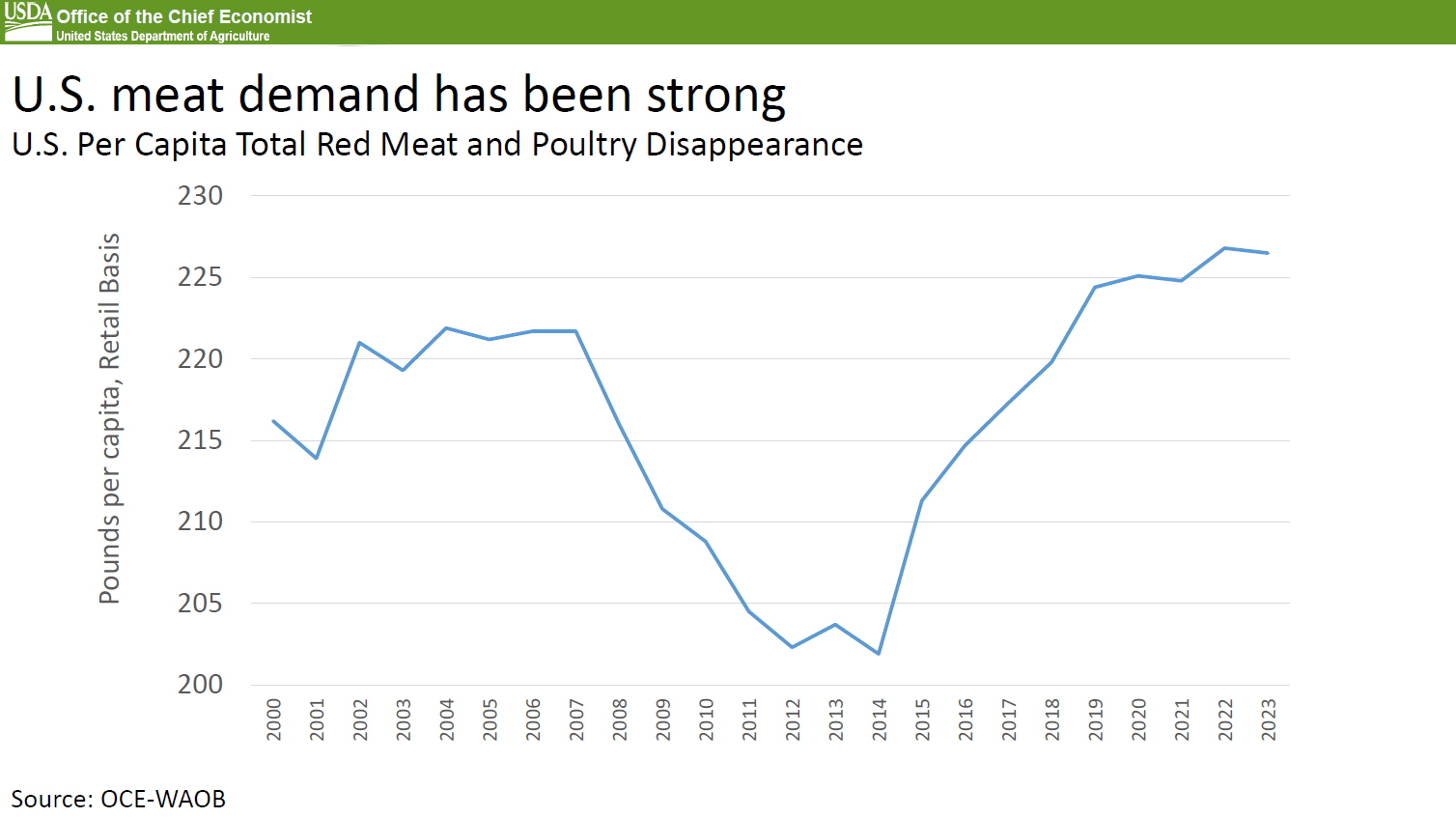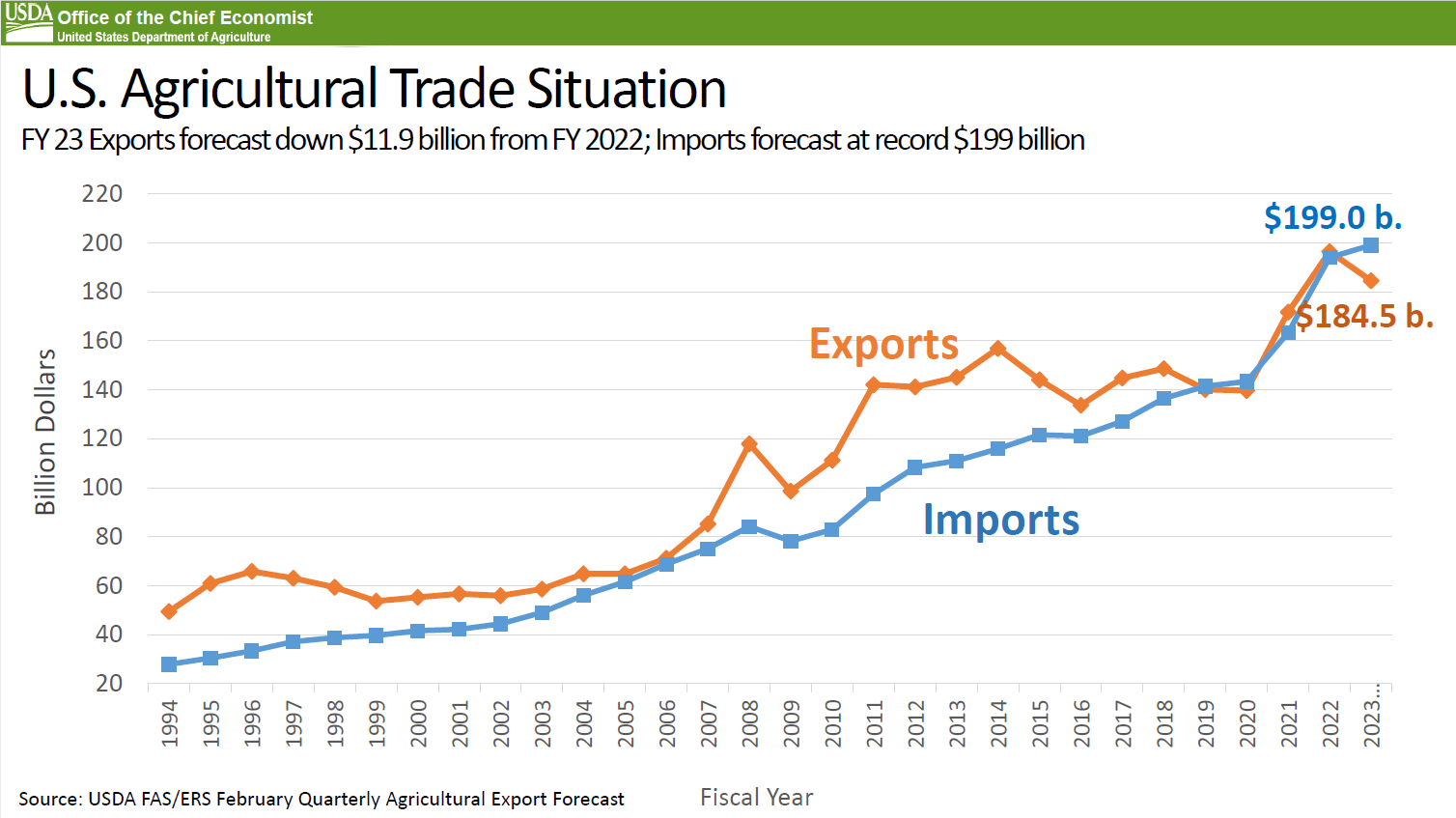Worrisome Updates from USDA’s Agricultural Outlook Forum

While several entities began the year with economic forecasts, as the NC Chamber and NC Bankers Association did in early January, it is never too late to continue thinking ahead about what the rest of 2023 will hold. This is particularly true in the sector that represents nearly one-fifth of our state’s workforce and almost $100B in economic impact. While I like to be wistfully optimistic about the agriculture industry, there are a few developments in materials I reviewed recently that give me pause.
I’m no economist, but I like listening to them. The good ones are careful to avoid definitive predictions. Instead, they focus on presenting the economic data they have collected, mined, and translated, and they let you decide what it means for the future. The USDA’s Chief Economist, Dr. Seth Meyer, gave that very kind of presentation last week at the agency’s annual Agricultural Outlook Forum. I want to briefly draw some parts of it to your attention. This is by no means a comprehensive summary of Dr. Meyer’s talk, and I hope you will absorb it in full once it is released. I consider both Dr. Meyer and his predecessor, Dr. Rob Johansson, to be good friends, and we are fortunate that they’ve dedicated their minds and careers to American agriculture.
In reviewing Dr. Meyer’s slides, a number of points caught my attention, but three stick out sorely. The first was the explosive growth in the size of the South American soybean production complex. I had an opportunity to spend time in Brazil about ten years ago, and I was told bluntly that this was precisely what they planned to do there. I doubted that it would happen, and I certainly didn’t think it could happen this quickly. Shame on me. In a decade, they’ve increased soybean production by about 80 million metric tons. Much of that product is finding its way into Asian markets, fueled not just by normal global market conditions but by China’s intentional diversification of its supply.

Second, USDA’s meat demand data is staggering, and it proves that we must continue to produce more meat as opposed to less, at least if we are going to continue to satisfy domestic consumer demand. Americans are not stepping away from the grill, despite the higher prices associated with the fuel underneath the grate and the protein on top of it. To be clear, I have no objections to this trend, and I cite it here for two reasons. First, it highlights that we have to continue to innovate to meet consumers’ demands for sustainably produced protein. Second, it suggests that the hype around protein substitutes is not producing much in the way of actual substitution.

Third, and this is perhaps the most disappointing of all the data presented in Dr. Meyer’s deck, the United States is forecasted to have a sizable agricultural trade deficit this year. In layman’s terms, we are bringing more food into the United States than we are shipping out. As the graph below indicates, if the prediction for 2023 holds, the delta between total imports and total exports would be the largest it has ever been. Dr. Meyer goes on to explain that this is largely because of the continuing rise in imports of “horticultural crops,” including fruits and vegetables – which typically are labor intensive to produce – and because of a drop in exports which are hampered by the strong U.S. dollar abroad. It is tempting to be hyperbolic about this development, but I am generally more disappointed than I am concerned.

The slides shared in his presentation are available here. Take a few minutes to peruse this incredible resource and let me know what strikes you as interesting.
– Ray
Ray Starling
General Counsel & President of the NC Chamber Legal Institute
NC Chamber